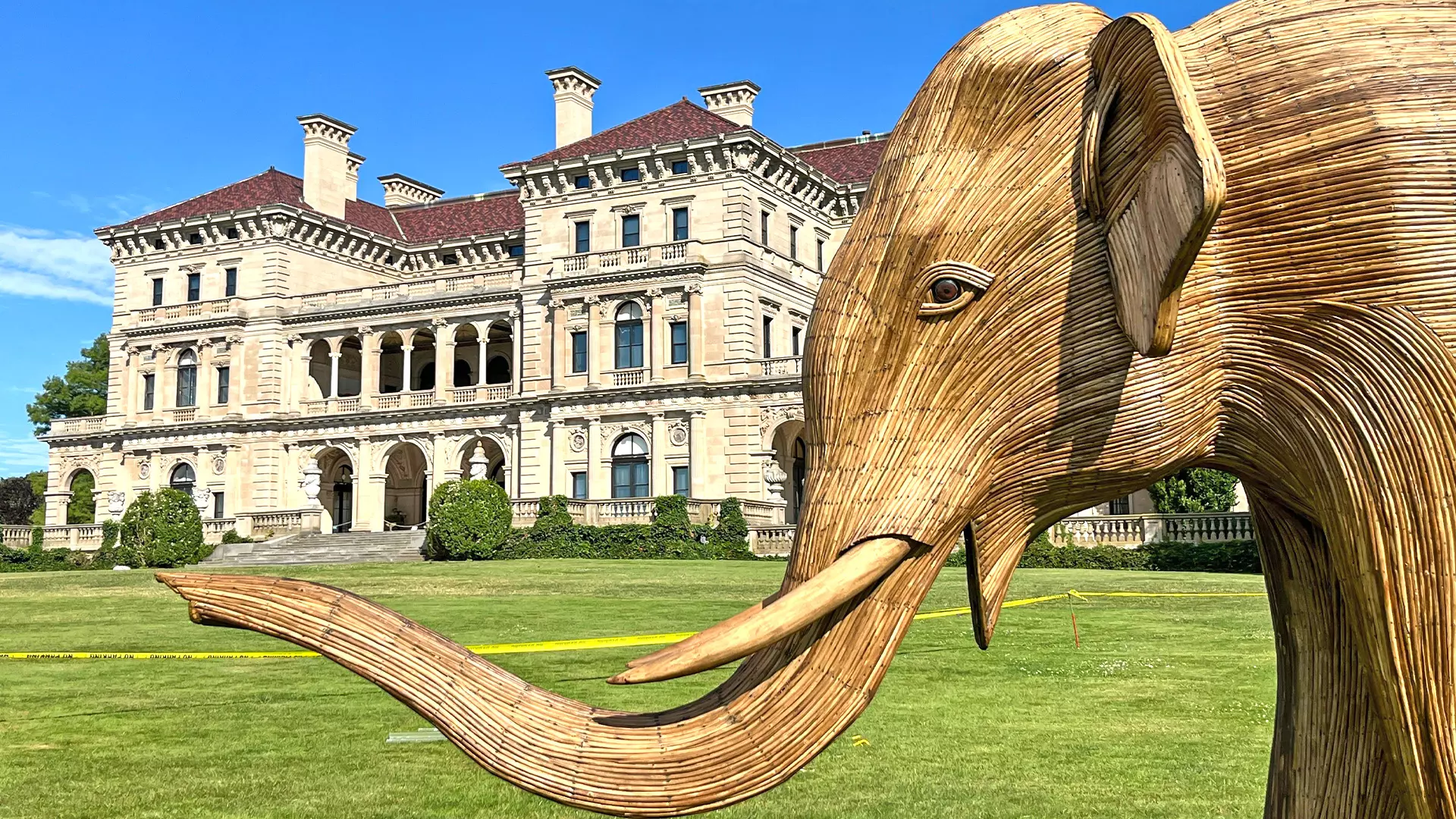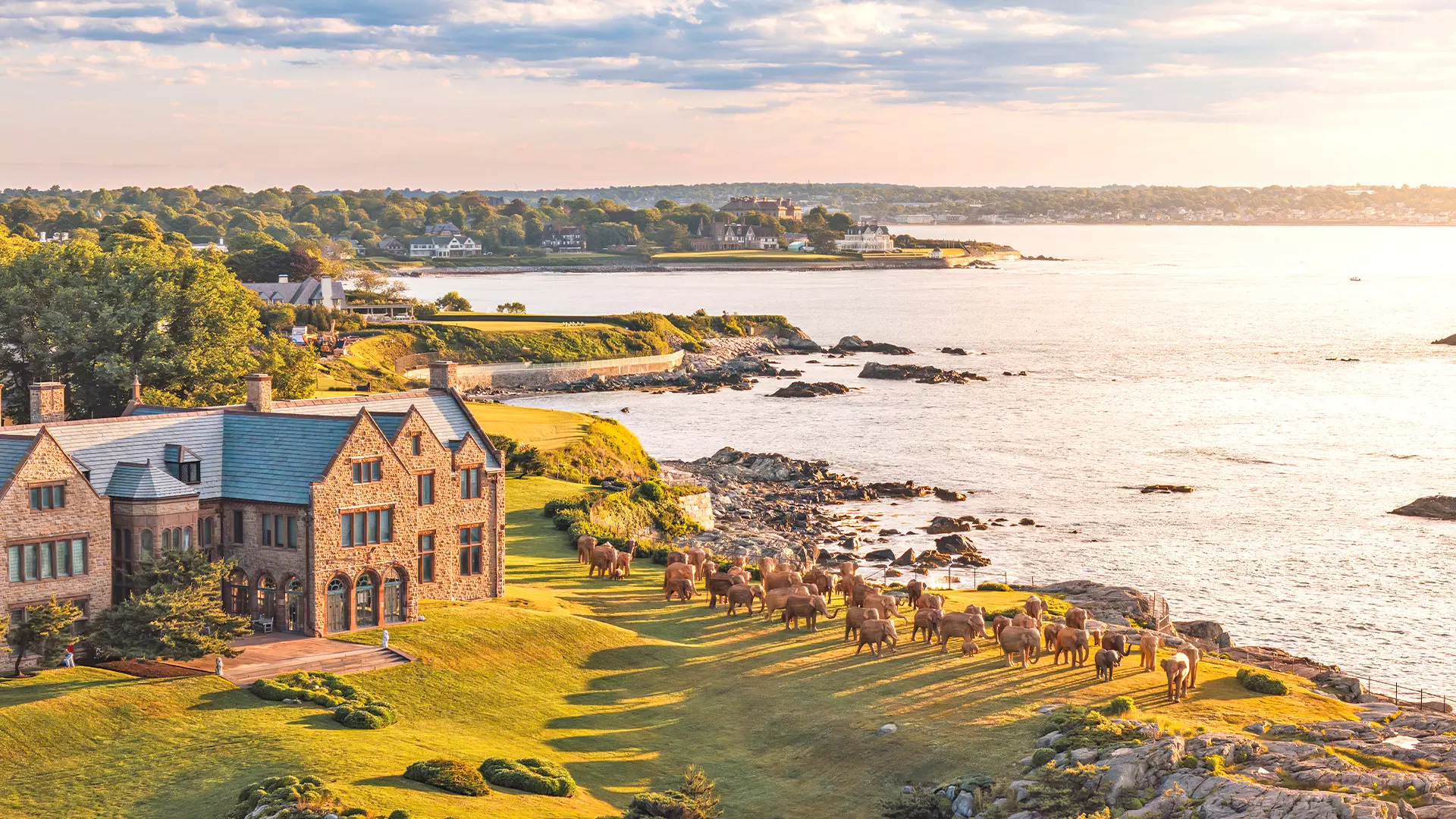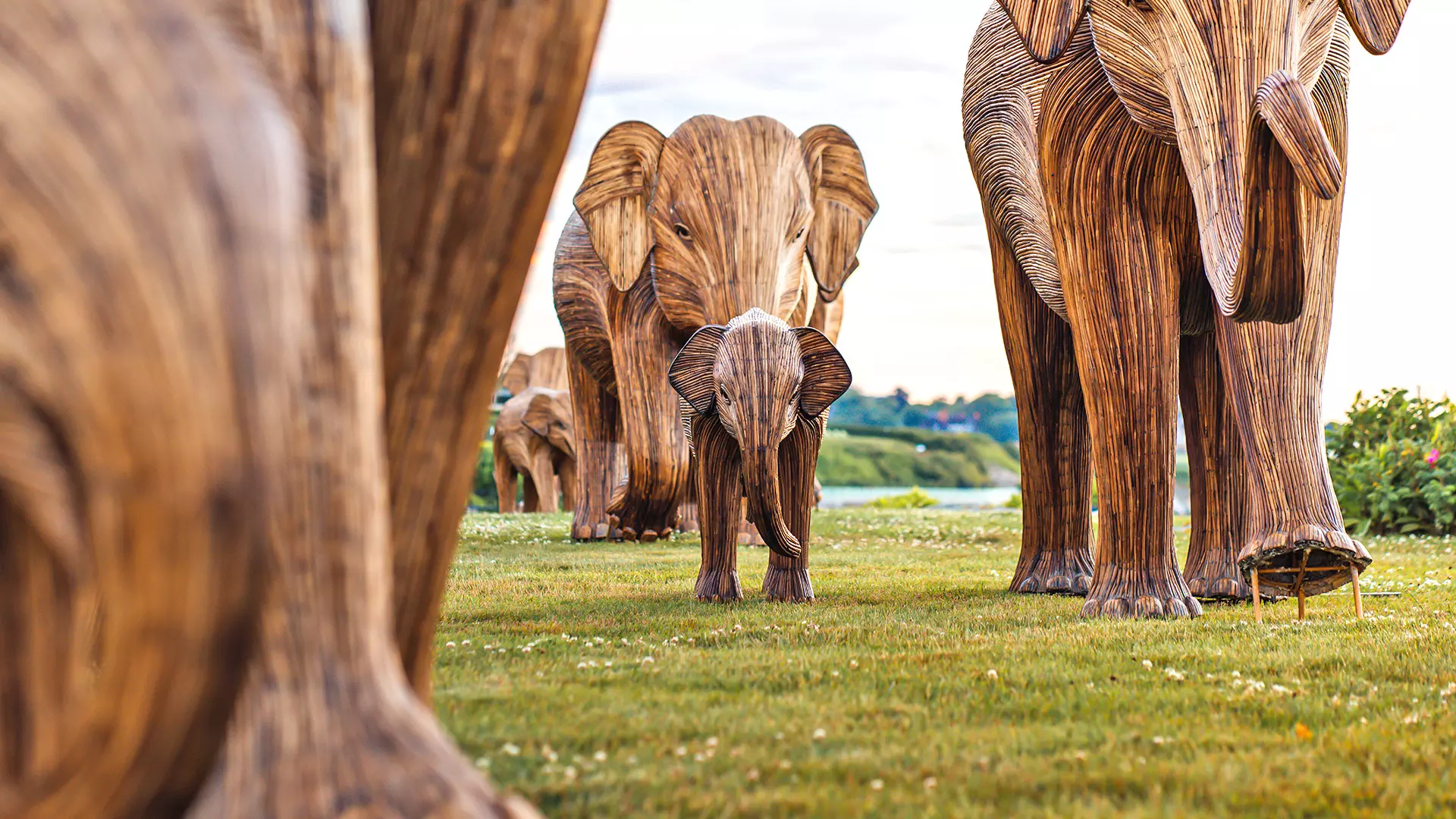
- Home
- India
- World
- Premium
- THE FEDERAL SPECIAL
- Analysis
- States
- Perspective
- Videos
- Sports
- Education
- Entertainment
- Elections
- Features
- Health
- Business
- Series
- In memoriam: Sheikh Mujibur Rahman
- Bishnoi's Men
- NEET TANGLE
- Economy Series
- Earth Day
- Kashmir’s Frozen Turbulence
- India@75
- The legend of Ramjanmabhoomi
- Liberalisation@30
- How to tame a dragon
- Celebrating biodiversity
- Farm Matters
- 50 days of solitude
- Bringing Migrants Home
- Budget 2020
- Jharkhand Votes
- The Federal Investigates
- The Federal Impact
- Vanishing Sand
- Gandhi @ 150
- Andhra Today
- Field report
- Operation Gulmarg
- Pandemic @1 Mn in India
- The Federal Year-End
- The Zero Year
- Science
- Brand studio
- Newsletter
- Elections 2024
- Events
What happened when a herd of Indian elephants migrated to the US

What do elephants do with lantana camara, one of the world’s widespread invasive weeds that have encroached upon more than 40 per cent of India's protected areas? The scientists, who studied the foraging behaviour of elephants, say the animals don’t feed on these weeds and they have nothing to do with it. A group of indigenous artists and conservationists, however, went a step ahead,...
What do elephants do with lantana camara, one of the world’s widespread invasive weeds that have encroached upon more than 40 per cent of India's protected areas? The scientists, who studied the foraging behaviour of elephants, say the animals don’t feed on these weeds and they have nothing to do with it. A group of indigenous artists and conservationists, however, went a step ahead, using the dried invasive weed as a tool to communicate an important message through elephants. They create awareness among people about the importance of conservation and human-animal coexistence by making sculptures of elephants using the dried branches of this weed.
Three months ago, when the sculptures of a herd comprising 100 life-sized Indian elephants crafted from lantana camara assembled in Newport (US), the event marked a memorable episode of a great initiative. Called ‘The Great Elephant Migration’ (TGEM), the experiment was part of an international collaboration between indigenous artisans, contemporary artists and cultural institutions to support conservation efforts and inspire a peaceful human-animal coexistence.

A group of indigenous artists and conservationists used the dried invasive weed as a tool to communicate an important message through elephants.
Each elephant in the herd has been created by ‘Coexistence Collective’, a community of 200 indigenous artisans from the Bettakurumba, Paniya, Kattunayakan and Soliga communities of India’s Nilgiri Biosphere Reserve, Tamil Nadu. The collective has recreated every elephant they live alongside in intricately detailed sculptural form. Each elephant is twinned with a conservation NGO in the US and beyond whose work will directly benefit from the sale of their sculpture.
The sculptures of elephants have reached New York City, and are set to travel to Miami, Blackfeet Nation, Buffalo Pastures in Browning, Montana, and Los Angeles through 2025. A UK tour in 2021 attracted more than five million spectators. Why are the sculptures of elephants made of lantana camara? The migration supports a large-scale lantana removal project, converting it into biochar which improves soil fertility and water retention. “Biochar is the only feasible direct capture solution for sequestering carbon into the ground to mitigate climate change – the biggest problem humanity faces today. The project will restore vast areas of forests over the next five years. By the end of 2025, this effort will have sequestered 2,625 tons of carbon and created more than 500 jobs for people belonging to indigenous communities through this initiative,” said a release issued by the organisers of TGEM.
The creation of the elephants supports long-term sustainable employment for indigenous communities in Tamil Nadu. Besides, sculpture sales support global conservation efforts. The lantana elephants come in four sizes and make themselves at home in all sorts of locations including gardens, business frontages, estates, and schools. Each sculpture is crafted with great care, using dried lantana camara meticulously wrapped around a sturdy steel rebar frame, and finished with a protective Osmo oil coating to ensure durability and beauty.

Each elephant is twinned with a conservation NGO in the US and beyond whose work will directly benefit from the sale of their sculpture.
The one-year-long US phase of the travelling public art exhibition evokes tremendous response even in the beginning itself as it is the first time people see a herd of elephants made of lantana camara have been installed in the prime areas of their cities. “In the last 40 years, the human population of India has doubled to 1.45 billion, which has coincided with an increase in the number of elephants, rhinos, lions, and tigers in the country,” said Ruth Ganesh, co-founder of Coexistence Collective.
“India’s elephants are flagships for coexistence with 80 per cent of their range outside the protected areas. In Gudalur, in the Nilgiri Hills, 150 elephants share space with a quarter of a million people. Humans and elephants share the same land, food and water, but still find ways to live alongside each other relatively peacefully. The success of this compassionate coexistence is a testament to the power of collective empathy. Our herd is here to tell its story, inspiring the human race to share space and be part of this transformative movement,” she added.
Lantana camara, a native of South American tropical forest, was brought to India as an ornamental plant at the Acharya Jagadish Chandra Bose Botanical Garden of Kolkata in 1807. The plant eventually spread out across all open areas along the sides of roads, railway tracks, farm lands and forests all over the country. With its wide ecological tolerance, lantana’s rapid growth soon displaced native forage species. Today, lantana camara is treated as a ‘Category-I’ invasive exotic species in the country. In India, major plant introductions can be traced to the establishment of the East India Company’s (EIC) botanical garden in 1786, according to Ramesh Kannan and Charlie M Shackleton.
“Within a relatively short span of eight years, the EIC brought over 300 plant species into the first botanical garden in Kolkata. The present spread of a few invasive alien species (such as lantana camara and chromolaena odorata) in the Indian subcontinent can be directly traced to the European and British introductions during the EIC rule,” write Ramesh Kannan and Charlie M Shackleton in their review paper titled, “Reconstructing the history of introduction and spread of the invasive species, Lantana, at three spatial scales in India.” A recent study shows that lantana has invaded more than 40 per cent of India’s tiger reserves, distributing widely across landscapes with maximum invasion in fragmented dry deciduous forests of Central India, Shivalik hills and Western Ghats.

The sculptures of elephants have reached New York City, and are set to travel to Miami, Blackfeet Nation, Buffalo Pastures in Browning, Montana, and Los Angeles through 2025.
The travelling exhibition, which began in Newport in July, moved to New York City's Meatpacking district in September. Programming and activations will continue into late October, allowing visitors to experience the elephants at key gateways and plazas throughout the neighbourhood. In December, the elephants will make their way to Miami for Art Week, where further programming and artist interventions will take place. Following installations on the East Coast, the herd will make its way west for the final leg of the Migration from the Buffalo Pastures of Blackfeet Nation, Montana into Los Angeles. “This journey will involve a convoy of 100 jeeps adorned with Indian lorry art, each towing a single elephant sculpture. From rugged mountains and breathtaking vistas to the vibrant streets of Los Angeles, this journey will symbolise the experience of migratory animals in a human-dominated world,” said an organiser of the event.
